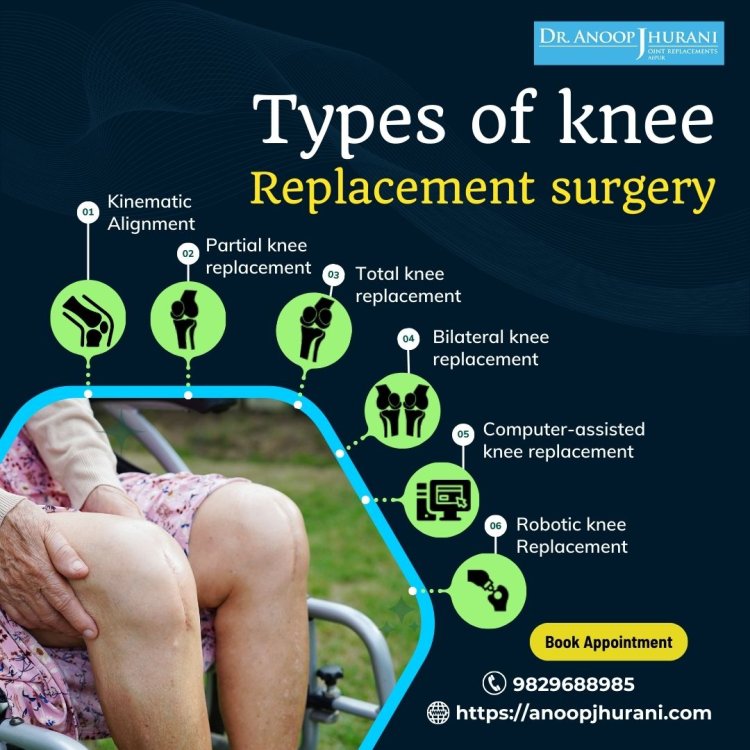Types of Knee Replacement Surgery
Dr. Anoop Jhurani is one of the knee & hip replacement doctors in Jaipur. He has performed over 12,000 successful knee and hip surgeries.
Share this Post to earn Money ( Upto ₹100 per 1000 Views )

Knee replacement surgery, a transformative intervention also known as knee arthroplasty, has become a beacon of hope for individuals grappling with debilitating knee issues. As patients explore this surgical path to alleviate pain and restore mobility, understanding the types of knee replacement becomes crucial. In India, the choice between total and partial knee replacement plays a pivotal role in tailoring the approach to each individual's unique condition.
Total Knee Replacement: Comprehensive Restoration for Advanced Osteoarthritis:
1. Indications for Total Knee Replacement: Total knee replacement is preferred when osteoarthritis has extensively damaged the knee joint, resulting in complete degeneration. This comprehensive procedure aims to address issues across all three principal compartments of the knee: the medial compartment (inside), the lateral compartment (outside), and the patellofemoral compartment (front).
2. Degeneration and Misalignment: Patients experiencing widespread degeneration and misalignment due to advanced osteoarthritis find solace in total knee replacement. The surgery involves the removal of damaged surfaces in all three compartments, paving the way for installing metal and plastic components to restore joint function.
Unicompartmental Knee Replacement: Targeted Precision for Limited Osteoarthritis:
1. When Partial is Preferable: Unicompartmental knee replacement, commonly referred to as partial knee replacement, becomes the treatment of choice when osteoarthritis is confined to a specific part of the knee. This targeted approach allows for precision in addressing localized damage without the need for a comprehensive replacement.
2. Principled Compartments: The knee comprises three principal compartments, and in cases where osteoarthritis is limited to just one of these compartments—be it the medial, lateral, or patellofemoral—partial knee replacement becomes a viable solution. This procedure selectively replaces only the affected area with metal and plastic components.
Partial or Total: Tailoring Solutions for Lasting Relief:
1. Partial Knee Replacement Benefits: Partial knee replacement offers several benefits, including potentially quicker recovery, less postoperative pain, and a more natural feel to the knee. It is a targeted solution for cases where osteoarthritis has not affected the entire knee joint.
2. Total Knee Replacement Advantages: Total knee replacement, on the other hand, provides comprehensive restoration for patients with widespread degeneration. While it may involve a slightly longer recovery period, it addresses the entirety of the knee joint for lasting relief and improved function.
Empowering Choices for Knee Health:
Navigating the realm of knee replacement surgery involves empowering choices guided by a thorough understanding of one's condition and the available solutions. Whether opting for the comprehensive restoration of total knee replacement or the targeted precision of partial knee replacement, the goal remains the same: to reduce pain, enhance mobility, and restore the joy of everyday activities. In India, the journey towards improved knee health is a personalized one, with orthopedic experts like Dr. Anoop Jhurani leading the way in tailoring solutions for lasting relief.
















